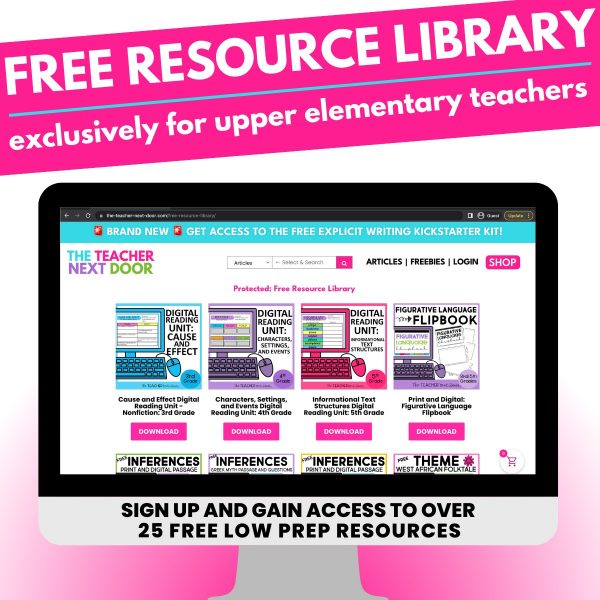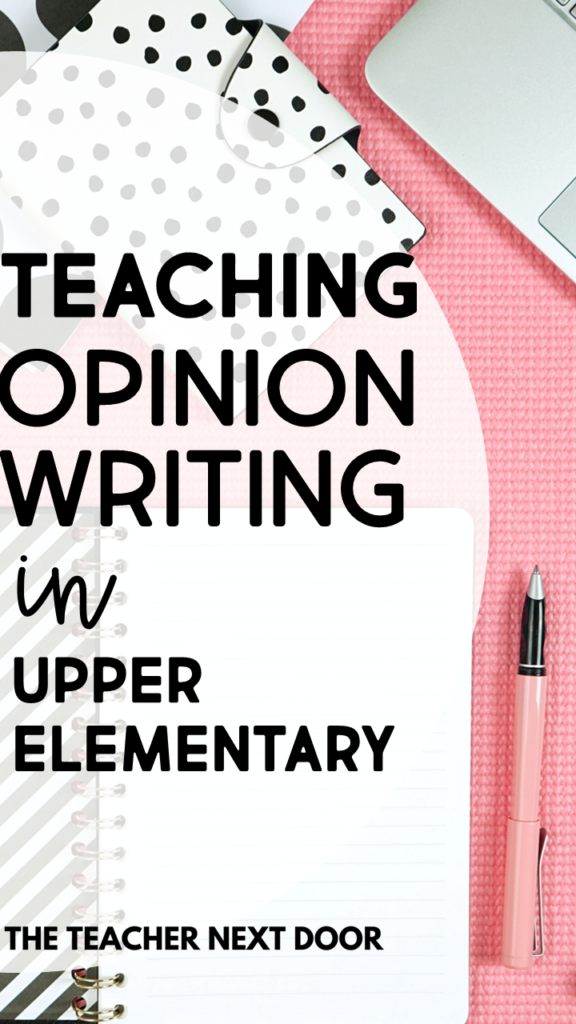
Kids are natural-born persuaders. They do it all the time. The trick as a teacher is to take their set of skills and help them use their power for good. And by good, I mean to channel these skills into writing effective persuasive pieces.
So, what exactly do we need to do to teach persuasive writing? I won’t lie to you…it’s not an easy task, but I’ll try to break it down here and simplify the steps to hopefully make this something that you can use in your classroom.
1. Teach Paragraph Writing FIRST
Before I even begin to think about teaching students to create an opinion piece, I make sure that my class has learned the basics of writing a good paragraph. We spend a lot of time with each component, and after they’ve mastered one paragraph, we move on to the five-paragraph essay.
Since I teach 4th/5th, this is one of the standards we need to reach. Once I know that students can write a reasonably good essay, then they can learn an opinion essay a little more easily.
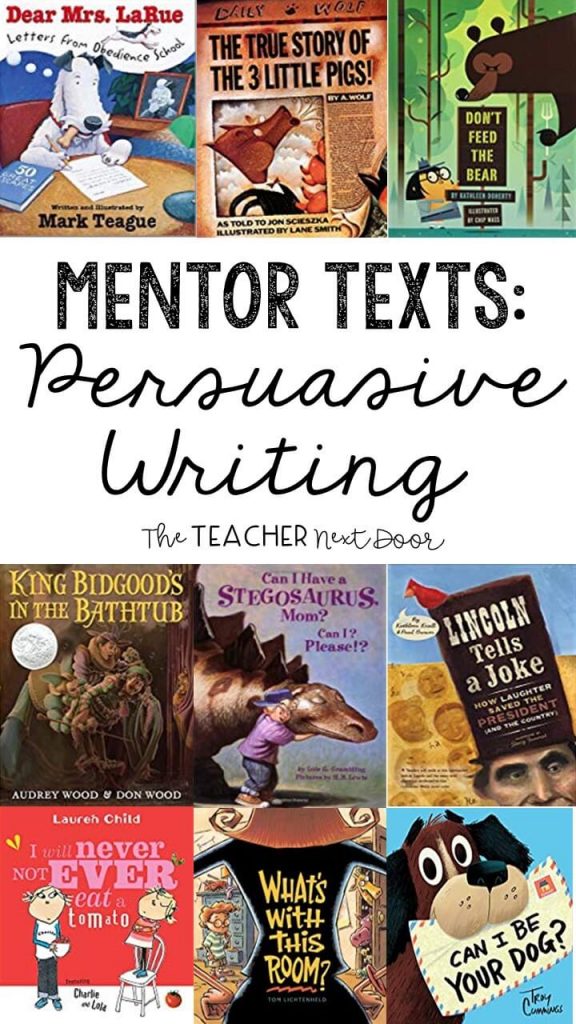
2. Use Mentor Texts to Introduce Opinion Writing
I am a big fan of mentor texts. I just love how picture books easily capture the attention of my “big” kids, while quickly teaching them so many lessons.
When I teach opinion writing, I like to gather several of these persuasive mentor texts and share them with my class. We talk about how the character used persuasive techniques well, or how he/she didn’t.
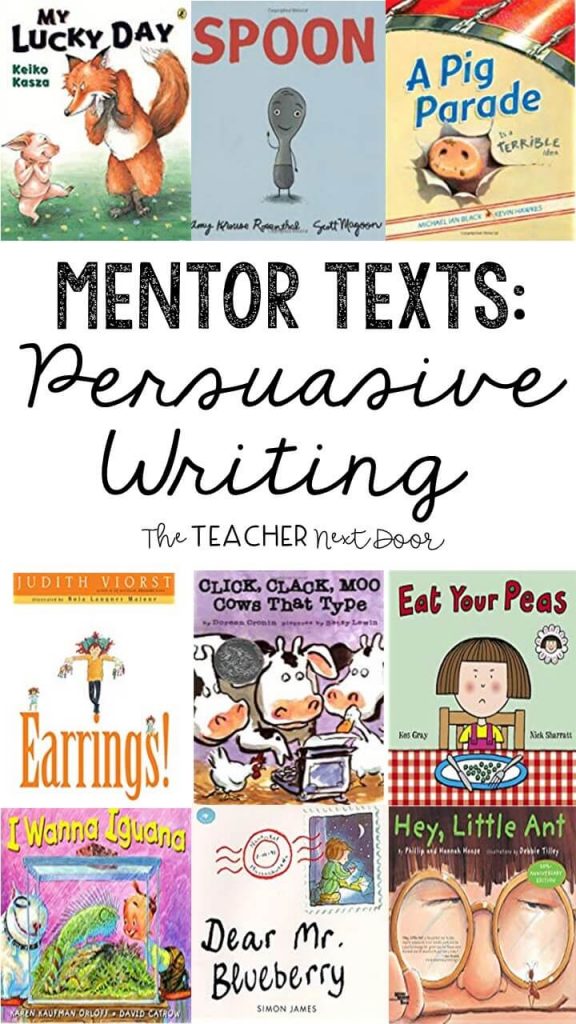
3. Start With the Big Picture
Before we start to officially write, we talk about what an opinion essay is and isn’t. I like to give students three choices with similar topics and ask them which one is the opinion essay. For example, they might choose between these titles: The Magical Elephant, Elephants and Their Families, and How to Save the Elephants. Next, I have a handout that shows the structure of an opinion essay. Since we’ve written five-paragraph essays before, they have a good handle on the basic essay structure. Then I guide them step by step through each component. We absolutely do not write a single opinion essay until we’ve had the opportunity to have lots of mini-lessons, see many examples, and practice all parts of the essay in a very low-stakes environment.
4. The Introduction Paragraph is First
A. Introduce Hooks
Now we spend some time focusing on how to start the essay. We start by using a hook (also called a lead).
I like to describe a writing “hook” using a fishing analogy. The fisherman puts a nice pink, juicy worm on the hook, hoping to attract the attention of the fish. If the fish bites, the fisherman’s happy. If the fish doesn’t bite, that means that it wasn’t interested in the hook, and there won’t be any fish caught.
Our goal as a writer is to get the reader interested by “hooking” them into reading our essay, from the very first sentence.
We go over six different types of hooks and practice these. I also love using opinion writing posters as I introduce each new opinion essay concept. They’re a great reference for students on the wall or printed in miniature for writing notebooks.
B. Review Topic Sentences
For an opinion essay, the topic sentence is the opinion sentence. It is the author’s viewpoint. We do a lesson reviewing the five types of topic sentences we use for paragraph and essay writing, and I show students how to tweak these into opinion statements.
C. Time to Add the Three Reasons
The last part of the introduction lists the three reasons for our opinion. I teach students that these can be listed as a single sentence with commas between them, or we can write three separate sentences, one for each reason.
For the first lesson on reasons, I give students a topic (cell phones or vending machines at school or which season is the best, etc.) and then ask students to write three bullet points on their whiteboards. Next to each one, they write a word to describe a reason they like/dislike this idea.
For example, if the topic was school uniforms, the child might write lack of individuality, gets boring, uncomfortable… I can quickly glance at their lists while we discuss a few of them, and then we’re ready to practice with the next topic.
Without writing a whole essay, this is teaching students to think about organization and how reasons help support their opinions. I think this kind of practice is great!
When we transition this activity to a full essay, these reasons would turn into the topic sentences for each body paragraph of a five-paragraph opinion essay!
Btw.. if you don’t have whiteboards for your class, this is something you’ll really want to consider. They’re great for writing practice and so many things. I actually purchased shower boards at Home Depot for about $15 to make into whiteboards. They cut them into 12 x 12-inch squares for me for free!
5. Review, Review, Review
After we spend some time on each main section of the opinion essay (the introduction, the body paragraphs, and the conclusion), I like to give my students activities to really reinforce what they’ve learned. Besides review worksheets, we do games (like Stump the Expert), sorts, and color coding.
I really like to have students color code already-made paragraphs so they can see examples of quality writing, and they can master the structure of the paragraph. Once we’ve reviewed the introduction, it’s time to move on to the body paragraphs.
6. The Three Body Paragraphs are Next
There are three parts of each body paragraph, and I teach each part separately, one by one. The parts include a topic sentence that starts with a transition, three to five details to describe and explain the author’s reason for his/her viewpoint, and a conclusion sentence.
These three paragraphs are the meat of the essay. This is where students explain why they support or don’t support something.
We spend time doing activities like looking at three sentences and identifying which one is the topic sentence, which one is a detail, and which one is a conclusion sentence.
We look at pre-made topic sentences and related conclusion sentences and rate them as part of a great class discussion and then in pairs or independently. Then, we review with more color coding, games, and sorts.
7. Focus on the Conclusion Paragraph
Conclusions can be a little intimidating for some students. Maybe it’s because they’re tired from the heavy lifting of the other four paragraphs, but with practice, you can help take away some of their apprehension and replace it with confidence!
The conclusion paragraph is a shorter paragraph (in 3rd – 5th grade) than a body paragraph. It has three distinct parts, an opinion sentence that starts with a transition, the three reasons, and a final thought or call to action.
A. The Opinion Sentence Starting with a Transition
The opinion sentence is really a topic sentence. It reinforces the same idea presented in the introduction paragraph but uses synonyms and usually a different type of topic sentence than the introduction to add variety.
We go over specific transitions that can be used for conclusions. While students may not always use a transition for their conclusion later on, I think it gives students structure and helps them break the ice of crafting a strong conclusion paragraph.
B. The Three Reasons (again!)
Just like the introduction paragraph, the conclusion paragraph lists the three reasons, usually in a single sentence with commas. Like always, you’ll want students to reword the sentence using synonyms to add variety.
C. The Conclusion, The Ending, The VERY LAST SENTENCE!
This last sentence is another place students may feel apprehensive to write at first. We go over the difference between a final thought and a call to action and practice by seeing lots of exemplars and then creating our own.
By the time we’re finished, most students understand how to gracefully and effectively add the conclusion sentence to finish the opinion essay.
Just like we usually do, once we finish a section, we review that section carefully using handouts, sorts, color coding, games, and reviews.
8. Share an Opinion Essay Example
It’s one thing to talk about an opinion essay’s components and to even practice them. It’s another thing to see a really good example of an essay and to get to go through it and discuss what makes it work and why.
I have several great examples I’ve saved over the years (and I have two that I wrote and included in my opinion essay unit). We take time to color code the essay and then create a reverse outline for it. They save this essay as an example.
9. Make an Outline and an Essay as a Whole Class (Eeek!)
Okay, here’s where your perseverance has to kick in.
Trying to complete an essay as a whole class will drive even the most saintly of teachers to want to pull their hair out at times, but this hard part is crucial. There, I said it. It is that important that this is a step you shouldn’t miss.
Here’s how I do it. I break it down into two to four days. On the first day, we created an outline together. I have students write this outline in their Writer’s Notebooks as a model to refer to when they need to make their own outline later.
We always do school uniforms, because I find it to be a great topic and one that my students feel strongly about.
I tell them for the sake of continuity, we need to take a stand as a class for the essay, whether they really agree with that stand or not. We take a class vote and then stick with it, whether it’s for or against the uniform idea.
On the second day, when we have the outline in place, I make a deal with the kids…I tell them if they stick with me, stay on task, and participate…I’ll do the writing (this time), and they can just tell me what to write.
If they don’t stay focused, then they’ll have to write it themselves. This works like magic. I’ve never had a class that lost out on this “deal.”
So, using yesterday’s outline, we go step by step and write each paragraph together. Students feed me sentences (I write these on the SmartBoard), which I try to use or gently guide them a bit where needed.
Usually, we do about 2 paragraphs in one day. The attention spans of 8 – 11-year-olds can be a killer, so I find that breaking it into several days helps.
10. Before Students Write – Go over Expectations Using a Rubric
I really like to use rubrics for lots of assignments. It breaks down the activity into its components, and it also serves as a road map for students to know what is expected of them. I think the more we can explain to students exactly what we’re looking for, the more they can meet and sometimes exceed (hallelujah) our expectations.
There’s never a reason to hide what we want from students, in my opinion. So, we go over the rubric together, and it’s a kind of review for all the lessons leading up to this. You can three-hole punch it so they can store it in their binders, or you can print it in a smaller size to fit their Writer’s Notebooks if you wish.
BONUS #11. Practice Writing Opinion Essays…Over and Over and…
Once your students have practiced each part of the opinion essay and are very familiar with its structure, it’s their turn to write independently. I choose several different topics for them over the next few weeks, and we do about an essay a week in class. The students get better as time goes by, and usually, I let them choose a topic for the last essay or two. It’s interesting to see what they come up with.
Whew…such a huge unit and so many skills to fit in, but in my mind, it is an awesome unit. I love teaching it because of the great number of discussions it provides and because I see it as an important set of tools for them to have in their writing toolboxes.
If you’d like some resources for opinion writing, I love this unit I created. It’s a bundle with over 100 printable pages and includes a digital format too. It will take you through the entire process with teaching pages, and detailed teaching notes, student practice pages, activities, and posters for 3rd – 5th grade.
Sarah is a 4th Grade Teacher and uses this unit and process in her classroom. This is what she had to say.
CLICK HERE TO FIND THE OPINION WRITING BUNDLE ON TPT!


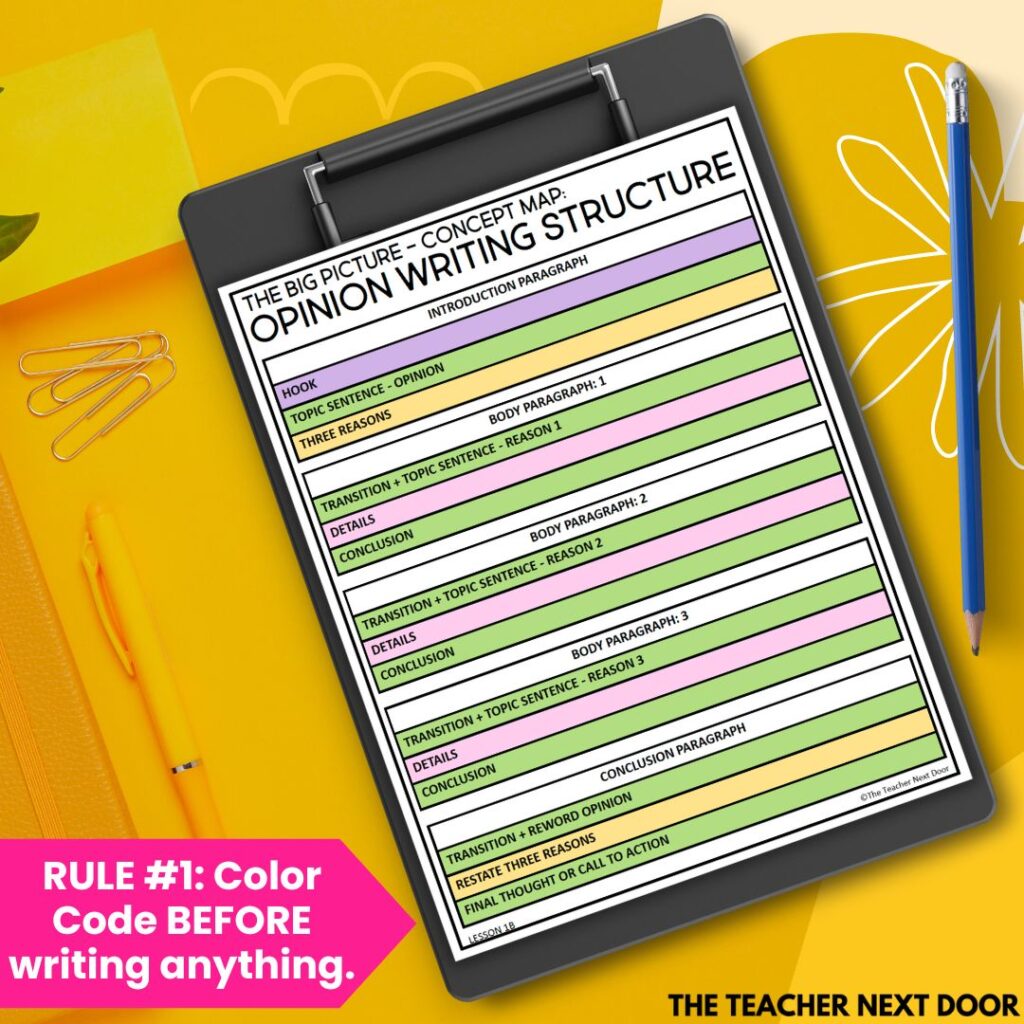
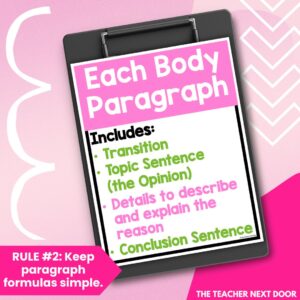

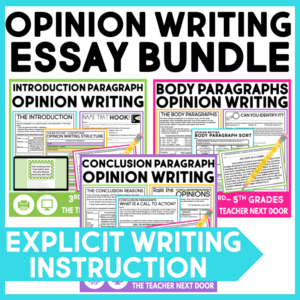


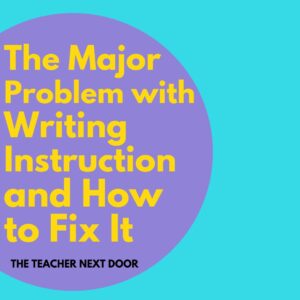
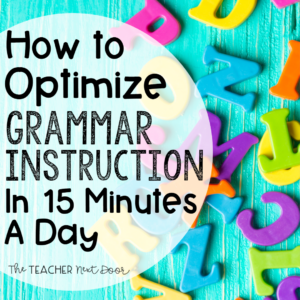
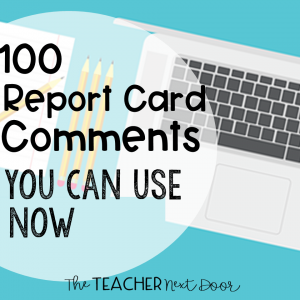
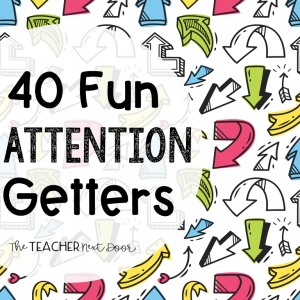
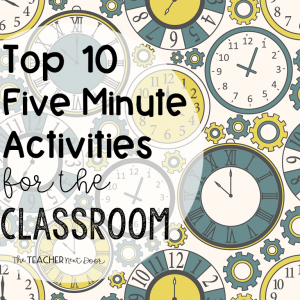



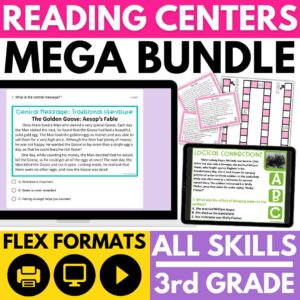
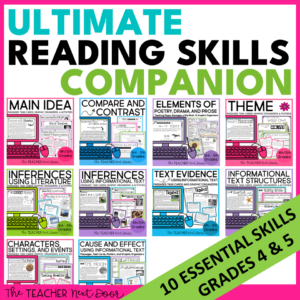
![DAY THREE DROPS! ⬇️⬇️⬇️
👉 Today, you can…
✔️ Grab done-for-you resources to keep your students engaged for $3
✔️ Grab FREE instant download activities!
✔️ Grab all of this week’s deals if you missed any!
ALL 5 of these comprehensive resources from my shop are $3 today to help fight spring fever in your classroom! 🌸🌼🌷
✏️ [BRAND NEW] Step-By-Step Personal Narrative Unit
✏️ Paired Texts Fiction to Nonfiction for Spring
✏️ 4th Grade Morphology & Vocabulary Unit
✏️ Main Idea Unit for 4th & 5th Grades
✏️ Figurative Language Complete Unit for Busy Teachers
Want the link to all the deals and freebies? Comment APRIL PARTY and we’ll send it directly to your DMs! 📫💌
PS - Don’t forget that you can still access all the Day 1 and Day 2 Deals too! 🩷](https://the-teacher-next-door.com/wp-content/plugins/instagram-feed/img/placeholder.png)

